Tuesday we began the “bikepacking” portion of our journey on our rented mountain bikes (with saddle bags that definitely lighten the load). We departed Roncesvalles to head to Pamplona, world-famous for their annual 9-day Fiesta de San Fermin that includes “running with the bulls” through the narrow streets of the historic old town, or as the Spaniards call it “el casco viejo”.
We started on a firm dirt path through the Robledal de las Brujas (The Witches’ Forest) so named for the “covens” held there in the 16th century 😯.
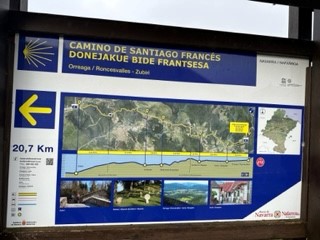
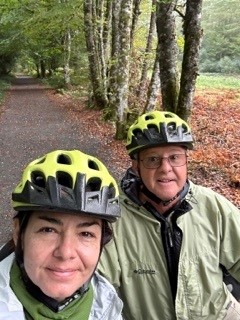
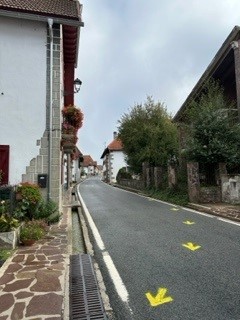
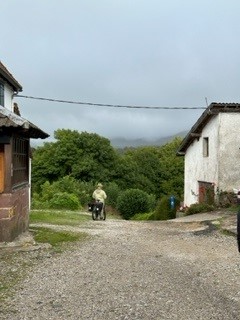
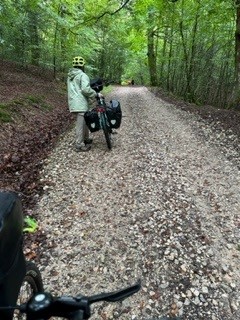
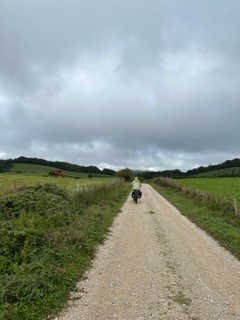
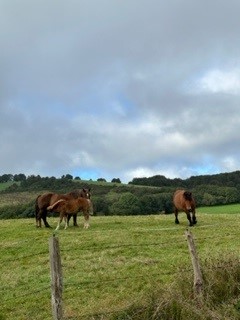
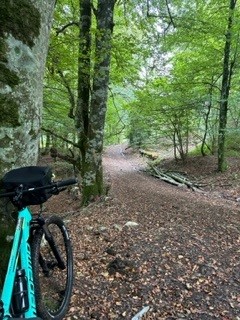
Then we went through some beautiful meadows before entering the Erro Forest above the town of Lintzoan. Unfortunately the reference book we were using did not specify the terrain for mountain bikes. We encountered very rocky terrain (much of it on a ridge but there were ascents) that we’ve never encountered – this was definitely what they call technical mountain biking for approximately 12 km. We managed to ride it slow for portions, and walked a lot of it, pushing our mountain bikes alongside.
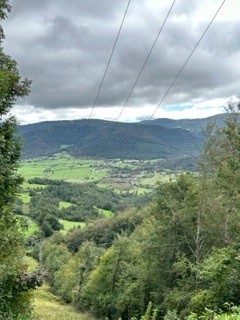
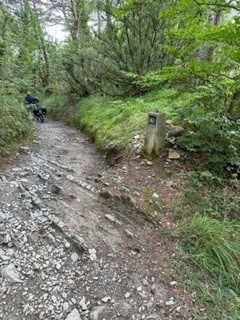
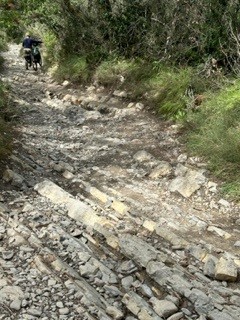
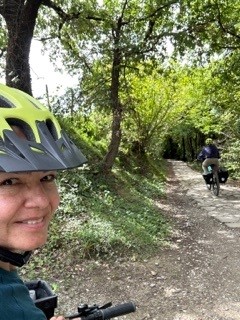
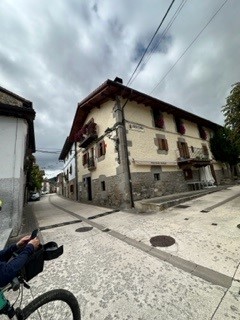
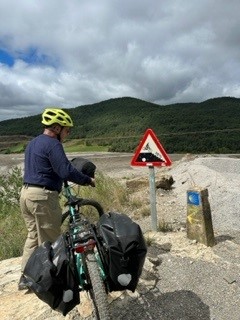
We got through that challenge and entered another stretch of very narrow forest along a rocky path that rose above the Arga River just outside the town of Zuriain. We’d been on the path for about 4 1/2 hours and I was definitely tired and pushing my limits. I miscalculated when trying to avoid hitting a jagged rock and when I went to put my foot down, I literally slipped off the edge and fell down the embankment about 10 feet into a thick brush that prevented me from rolling down the hill another 20 feet probably. Fortunately another pilgrim had been walking behind me and immediately screamed for help. I remember just assessing each part of my body for breaks – I knew I was scratched because I could feel the poking of branches along my back and arms. It wouldn’t have been too difficult to climb back up if my bike hadn’t fallen on top of me too.
Fortunately I could get myself upright to communicate with the other pilgrims and Tom. I took a breath and we assessed how to get the bike out so it would allow me to climb out. Fortunately the saddlebags were easily released and lightened the load to drag the bike up by the rear wheel while I held the front brake to prevent it from continuing to slide down on top of me. Between Tom and the other pilgrims we were able to get the bike out and then with some helping hands, I scrambled back up.
After doing another assessment of injuries, I got out the handy first aid kit I’d packed and Tom proceeded to patch me up with gauze and tape where I was scratched up along my back and side. Nothing broken, other than my confidence.
We proceeded to finish the last hour to Pamplona on the main highway choosing to take our chances with man-made risks as opposed to mother nature. Fortunately, once we made it within the city limits of Pamplona there was a designated bike lane that allowed us to use our own lane separate from traffic and we encountered a Spaniard who offered to guide us as he was headed into Pamplona as well. Entering the old city through the French Gate, we were quickly enveloped by cobblestone streets, ornate balconies and a beautiful tree canopy.
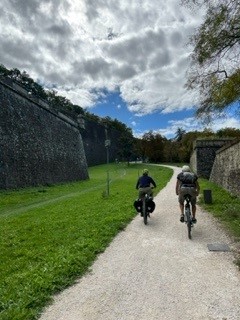
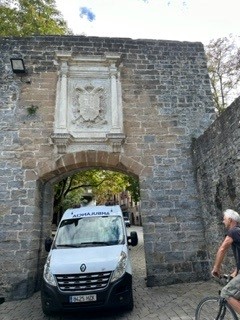
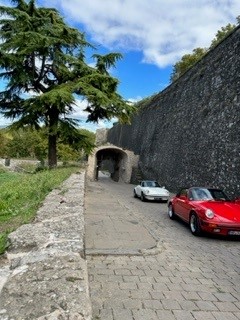
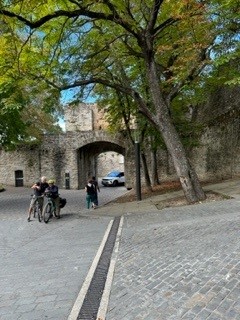
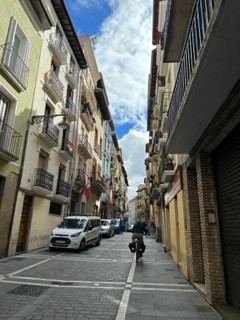
As I slowly pedaled through the old city, I said a prayer of thanks for God’s protection on this day. In the 49.4 km we traversed we had been pushing the edge of our abilities, our knowledge of the path and its hazards and not adjusting our expectations of ourselves.
We had planned to spend an extra day in Pamplona to explore the town and it was well timed. The next day I was surprisingly agile, only a bit bruised. While I sought a local bookstore to purchase a guide to El Camino by bike, Tom found the sporting good store to outfit our bikes with additional lighting for being more visible to cars on highways, as well as riding gloves and holders for our cell phones to be able to see our maps while riding. In the afternoon the shops and restaurants close. We then walked to Plaza del Castillo to have a drink at Cafe Iruna, (Ernest Hemingway’s watering hole while in Pamplona) while taking a deep dive with our new guidebook. We learned alternate paths that we could have taken in our previous route and looked ahead at our next route to plan accordingly.
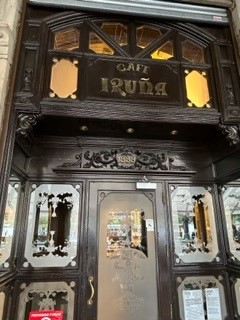
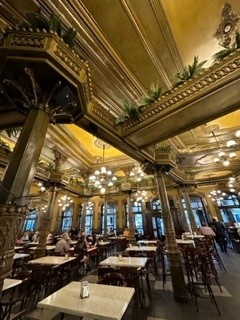
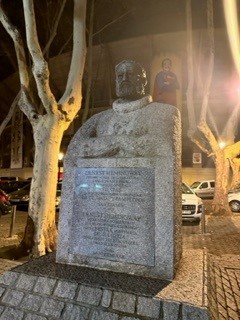
With 21 days and 770 km to go to arrive in Santiago de Compostela, we realized that this journey requires taking a step back from the edge and embracing humility in the face of the unknown.